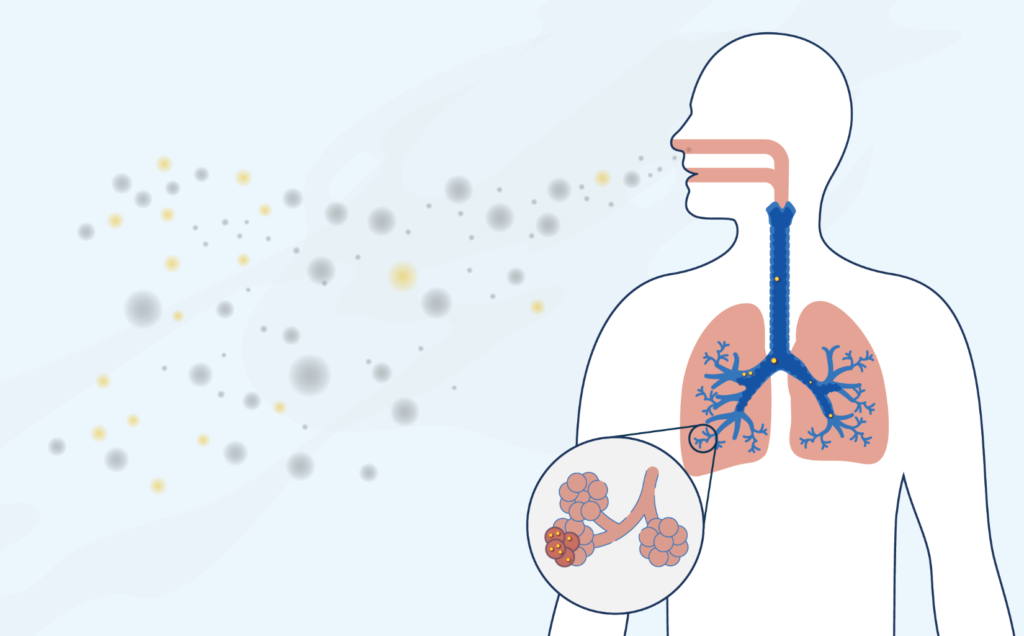3D printing is frequently hailed as a revolution in manufacturing. It provides fast prototyping capabilities, quick turnarounds and less material waste. These breakthroughs may come at a cost, however. In September 2022, Underwriters Laboratories Inc. published “Dosimetric and Toxicological Analysis of 3D Printer Emitted Particles.” The report is a continuation of previous efforts to demystify the impact of 3D printers on human health.
What Does the Latest Research Say?
The Underwriters Laboratories report dives right into the study’s findings with little fanfare. The abstract provides the following summary of fused filament fabrication (FFF) 3D printers purported effects on the human body:
- Even low-level exposure to FFF emissions can cause inflammation and cellular injury.
- Exposure may result in damage to DNA, phospholipids and other life-essential biomolecules.
- Exposure to printer filament particles may compromise the functionality of airway cells and cause oxidative stress.
- Affected individuals may suffer from worsening inflammation and additional cellular or DNA damage due to the high presence of metabolites.
These findings mostly concern the two most popular 3D printer filaments — ABS (acrylonitrile butadiene styrene) and PLA (polylactic acid). Manufacturers and hobbyists favor these materials because they provide relatively high impact resistance and impressive strength for their weight.
What Machine Operators Should Know About 3D Printer Emissions
The research project concludes with several takeaways for machine operators concerned about the potential health impacts of 3D printer emissions:
- ABS and PLA printer filaments emit potentially harmful emissions. However, ABS-based filaments may be more biologically active than PLAs.
- The study assumed an exposure time of six hours per day and five hours per week to be consistent with university and commercial machine-shop settings.
- The density of 3D printer filament emissions was far higher in proximity to the printer, even while the machine was idle, than in the room acting as a control.
The researchers performed batteries of tests from air samples gathered at various distances from the 3D printer and airway and other cells gathered from research participants. They used an MTS assay to measure unusual metabolic activity, ELISA assays to examine gamma-H2AX antibodies and other tests to determine the toxicological effects of inhaling FFF filament emissions.
Ultimately, all these tests contributed part of an answer to the central question of the research: What is the effect on the human body when exposed to high and low levels of FFF emissions? The researchers used a measurement called cellular viability to answer this question. They found these concerning results when using this metric:
- Individuals who receive either high or low exposure to FFF emissions close to the source may experience a 49.5%-56% reduction in cellular viability.
- Even individuals exposed to low levels of FFF filament emissions — such as those in adjacent rooms — may experience cellular viability losses of 15.4%-18.2%.
- ABS may be the more toxic of the two common plastic filaments used in 3D printers. Even at low doses farther from the 3D printer, subjects exposed to ABS demonstrated greater impacts on their cellular viability than those exposed to similar PLA conditions.
The research examined potential ways to reduce exposure to these filament emissions in educational and commercial settings. Interestingly, this research can be compared to previous UL studies that demonstrated vat photopolymerization to have more negative effects on the surrounding environment than FFF. With that in mind, FFF may still be the safer of the two in terms of operator safety.
How to Protect Machine Operators
The most complete protection was observed when placing a biosafety cabinet over the 3D printer during operation. The researchers demonstrated a more than 32% reduction in high doses of filament emissions when subjects remained near the printer. The researchers also noted a likely dilution effect on the density of emissions in the presence of high-airflow ventilation systems. Altogether, there are several steps machine operators can take to stay safe:
- Use a biosafety cabinet at all times when the printer is in operation.
- Never stand near a 3D printer while it’s being used.
- To minimize exposure risks, have personnel relocate as far from the 3D printer as possible while it’s in operation.
- Anyone using a 3D printer or entering a room where they are used should wear eye, nose and mouth protection at all times, even if the machine is idle.
3D Printing Delivers Innovation at a Potential Cost
3D printers and the broader concept of additive manufacturing has been promoted as a means of sustainable production. Sustainable manufacturing reduces collective dependence on nonrenewable resources and other sources of energy. It also brings renewed focus to reducing waste — a feat at which 3D printers excel because they add material to the workpiece rather than remove and discard it.
Keeping contaminants out of the air isn’t just good for human health. Virtually all types of manmade pollution harm air and water quality. Air pollution exacerbates the effects of global warming, too.
People are still in new territory when it comes to 3D printing. Until more of the scientific community weighs in on the possible health impacts, caution is recommended for anybody interacting with these machines daily.
